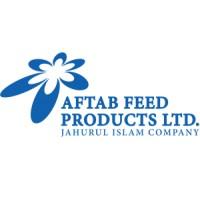Fish is the second-most important food group (after rice) in Bangladesh, providing 60 percent of animal protein consumption and a key source of micronutrients. The country’s fish supply is rapidly growing and transforming across species and in all market segments. However, demand continues to exceed supply. The estimated current production of 2.06 million metric tons/year falls shorts of the 2.34 million metric tons/year that consumers demand. By 2030, the demand is project to reach around five million tons/year.
Significant improvements in aquaculture productivity along with greater efficiency and quality differentiation in the value chain remain critical challenges for continued sustainable and inclusive aquaculture sector growth. Women are often systematically disadvantaged from gaining access to favorable livelihood opportunities across various segments of aquaculture value chains, often hidden and performing undesirable and underpaid roles.
There is a clear role for aquaculture in Bangladesh to make important contributions to the national economy, create income opportunities for hundreds of thousands of poor households, and improve nutrition.
The “Feed the Future Bangladesh Aquaculture and Nutrition Activity” (BANA) aims to sustain positive aquaculture sector growth through an inclusive market system approach. BANA works in the Bangladesh Feed the Future Zone of Influence (ZOI), consisting of 21 south-western districts and the Zone of Resilience (ZOR) which is two districts in the southeast affected by the Rohingya situation.
BANA builds on the achievements of the six-year Aquaculture for Income and Nutrition (AIN) project, which ended in 2017. The new project applies a market systems, rather than a direct delivery, approach. This means stimulating co-investment by the private sector and organizations to achieve the objectives with a focus on sustainability from the start.
BANA’s goal is to achieve inclusive aquaculture sector growth through a market systems approach. Its specific objectives are to
- increase productivity of aquaculture systems;
- strengthen aquaculture market systems, with special attention paid to expanding opportunities for women and youth; and
- increase awareness and adoption of nutrition-related behavior, specifically focusing on women and youth.
The project aims to reach the following targets:
- improved access to better quality aquaculture inputs, services and/or market channels for 400,000 men, women and youth
- 30 percent expansion of investment in aquaculture production and market related to inputs and services in by the private sector
- 30 percent increase in productivity from ponds and ghers
- 20 percent increase in the number of households adopting improved nutritional practices.
For further details on the projects’ impact pathways, please see the full project description on the Monitoring, Evaluation and Learning (MEL) Platform.










